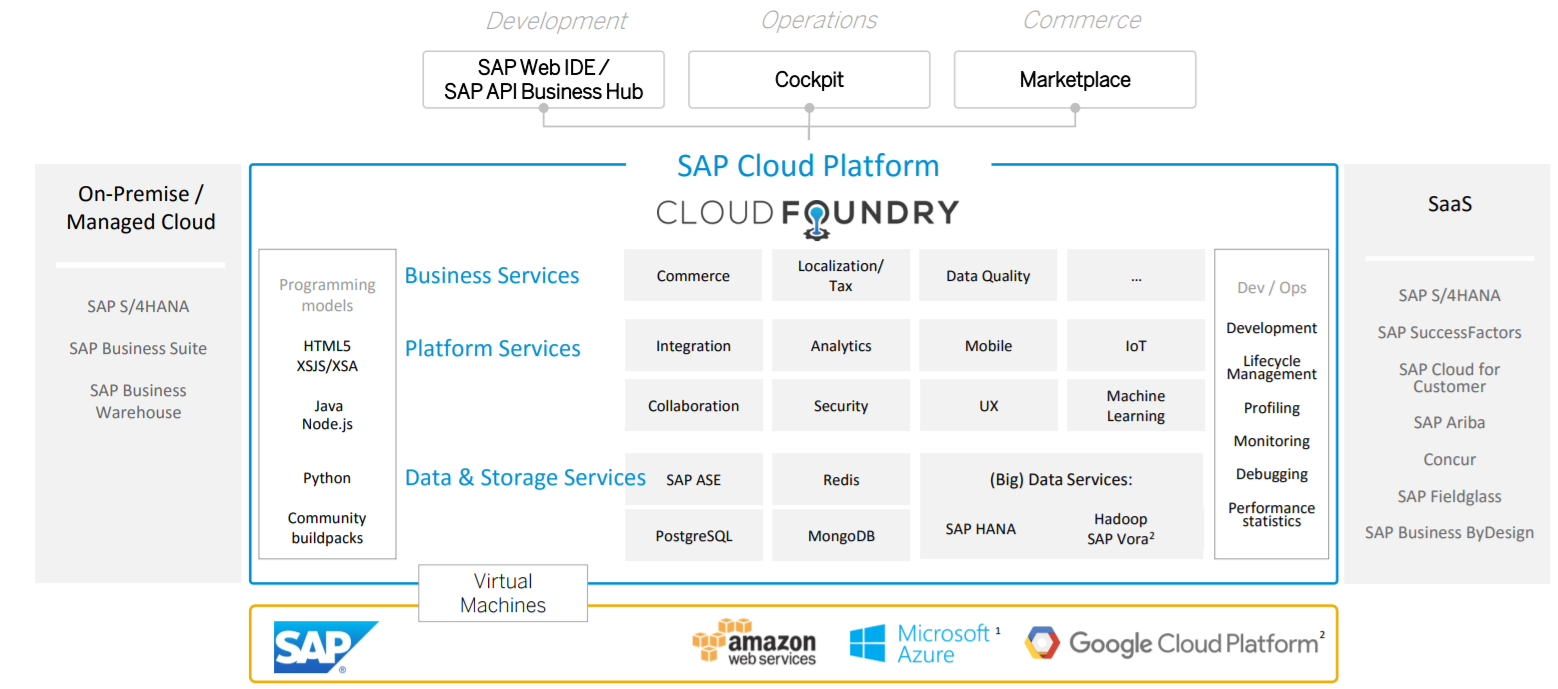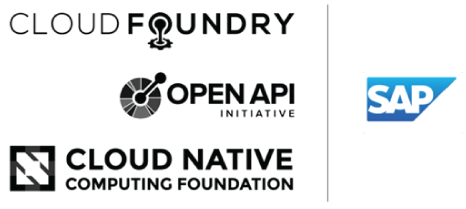IoT & Embedded Technology Blog
SAP Recommits to Cloud and Digital Transformation at TechED 2017
VDC headed out to Las Vegas last week to grab a seat at SAP’s annual developer conference, TechED 2017. SAP held the conference in the massive Palazzo convention center, with the focus of the conference centered on SAP platform developer education and outreach.
To say @_bgoerke & Team nailed #sapteched is an understatement. Great Story line, insights & shout out to @sapmentors ! Warp kudos ! pic.twitter.com/v5z2upEBT5
— Martin Gillet 🇧🇪 (@mgillet) September 26, 2017
CTO Bjoern Boerke kicked off the conference with a Star Trek themed keynote, introducing his crew of speakers in the classic attire of the USS Enterprise. Bjoern states that a small team at SAP chose the theme to convey the bold move to “boldly go where no man has gone before” and lay the foundation for today’s SAP Cloud Platform.
 Overview of SAP Cloud Platform Architecture
Overview of SAP Cloud Platform Architecture
The major keynote announcements included:
- Two new SAP data centers in Toronto (Canada) and Moscow (Russia)
- BETA launch of SAP Cloud Platform running on GCP (AWS and Azure integrations had been announced earlier in May 2017 at SAPPHIRE Now)
- Further partnerships with Google on machine learning and Kubernetes
- SAP joining the Cloud Native Computing Foundation
- SAP joining the OpenAPI initiative
- Launch of SAP Cloud Platform SDK
- Launch of SAP S/4HANA Cloud SDK
- Launch of new Machine Learning powered business services
- Cloud support for ABAP dev language

SAP investing heavily into the open source, cloud ecosystem
In addition, the keynote featured some compelling demos of quick, drag-and-drop cloud application development using the newly launched SDKs, APIs, and business services. The keynote message was clear: it may be uncomfortable for some legacy customers, but the future is cloud, and the future is here, so it’s time to get on board and hit warp speed on migration to this new technology and way of doing business.
Throughout the next two days we discussed everything IoT with SAP business leaders:
- Mala Anand - EVP, President of Leonardo
- Juergen Mueller - Chief Innovation Officer
- Dr. Markus Noga – VP Machine Learning
- Tony Han - VP IoT and Digital Supply Chain
- Gil Perez – SVP Digital Assets & IoT
- Sam Yen – Chief Design Officer
To name a few.
A number of key points emerged:
Leonardo is SAP’s brand for innovation. Any final conceptions of Leonardo as SAP’s IoT (and nothing else) brand were swept away in conversations over the week. New Machine Learning initiatives, blockchain, even mentions of quantum computing – they all fall under the Leonardo division, which is more of a consulting and design service than a strict vendor of technology. SAP understands that ideation, creative problem solving, and extremely close customer connections will be key for pushing the adoption of these often misunderstood technologies that many in the enterprise or legacy world might roll their eyes at. Accordingly, the skill set of a typical Leonardo “innovation” leader is a pragmatic mix of technology and business acumen, often with a strong vertical focus.
SAP can make a huge impact in the “humanitarian IoT”. Tony Han introduced me to this novel concept while discussing some of SAP’s untapped opportunities. Rather than commercial or consumer grade IoT, which drew initial investment due to heavy asset cost optimization potential, an ERP and logistics resource provider such as SAP is perfectly positioned to improve the quality of emergency and humanitarian supply chains. As recent natural disasters in Puerto Rico, Mexico, Florida, and other localities have demonstrated, there is always the opportunity to improve disaster response and public aid. SAP is positioned at the perfect junction to enable the digital side of “humanitarian IoT” overhaul. To this end SAP has partnered with the Institute of International Education, the Wikimedia Foundation, and NetHope, and we are eager to see how these companies apply SAP technology and expertise to the non-profit and humanitarian space.
PARTNERSHIPS – no holding back. The name of the game in IoT platforms is “co-opetition”. Companies have approached the blurring of partnership lines differently, especially when it comes to integration with the leading IaaS providers. Some IoT platform vendors have been reticent to add multi-cloud support, wanting to control and monetize all levels of the cloud stack, including the data center. SAP is all in on empowering developers to use competitors/partners AWS, Azure, and GCP to run SAP workloads, which we believe is a pragmatic and smart choice. IaaS and the cloud are already losing their differentiation – better to focus on higher levels of the software and application stack where SAP can add much more value, than to alienate customers who may want to test the waters with other cloud vendor leaders.
SAP’s future lies in closing the enterprise gap. Juergen Mueller made a few key points about the technology used in state of the art research labs, B2C businesses, and finally, B2B business. The technical standard in each market is currently miles apart – while state of the art researchers are busy tinkering with Kubernetes and TensorFlow, B2B engineers are still focused on maintaining on-premise ECC packages from 2005. Education and migration of legacy customers will be key to SAP’s success, and the SAP executive team has spent countless hours designing and crafting a migration path to help customers overcome the various migration hurdles.
Overall, at SAP TechED, the company recommitted itself to its goal of digital transformation, and showed off an impressive roadmap for cloud technologies to bring its customers along for the ride. We look forward to following the company’s IoT and machine learning progress in the near future.
View the 2017 IoT & Embedded Technology Research Outline to learn more.